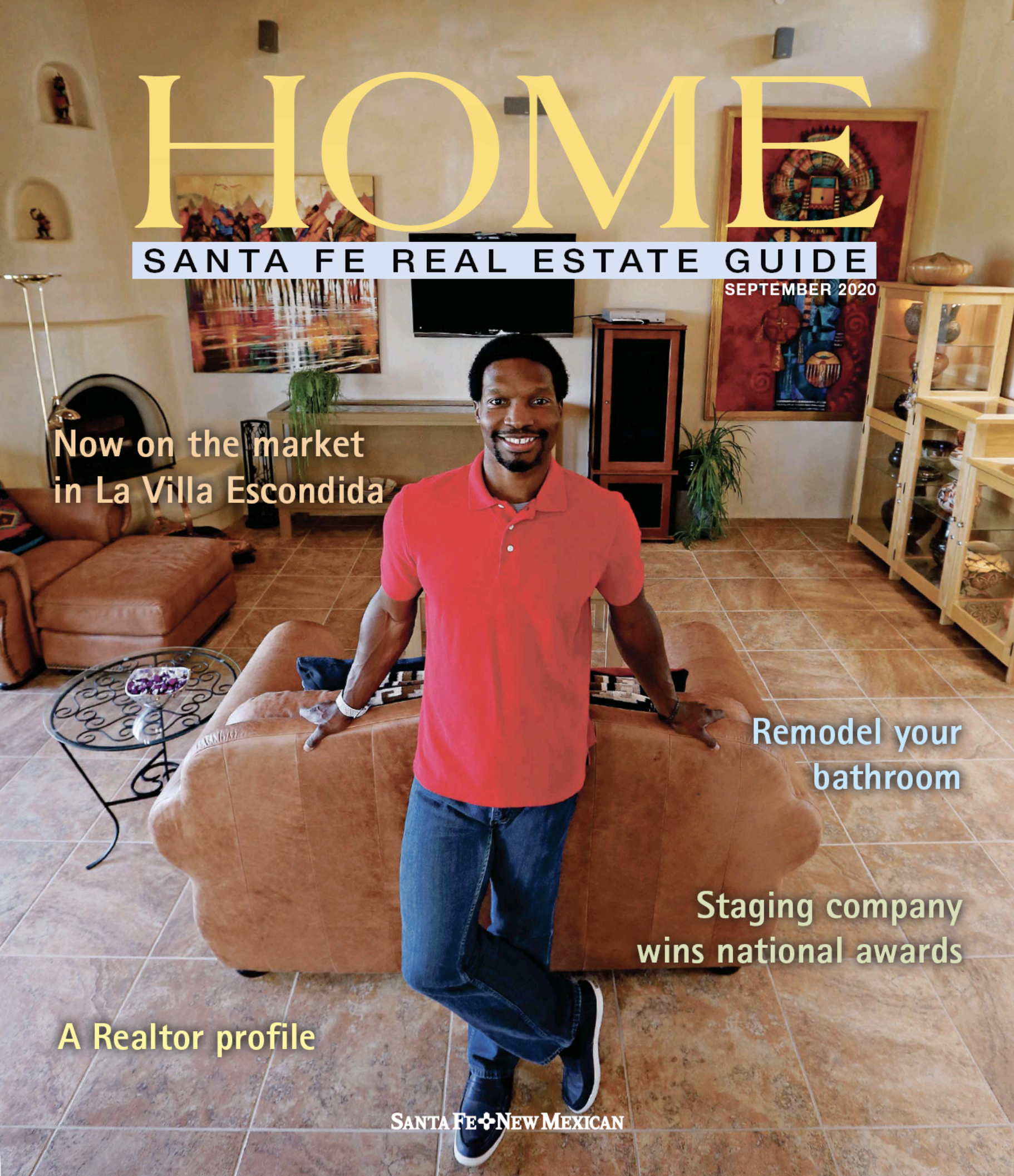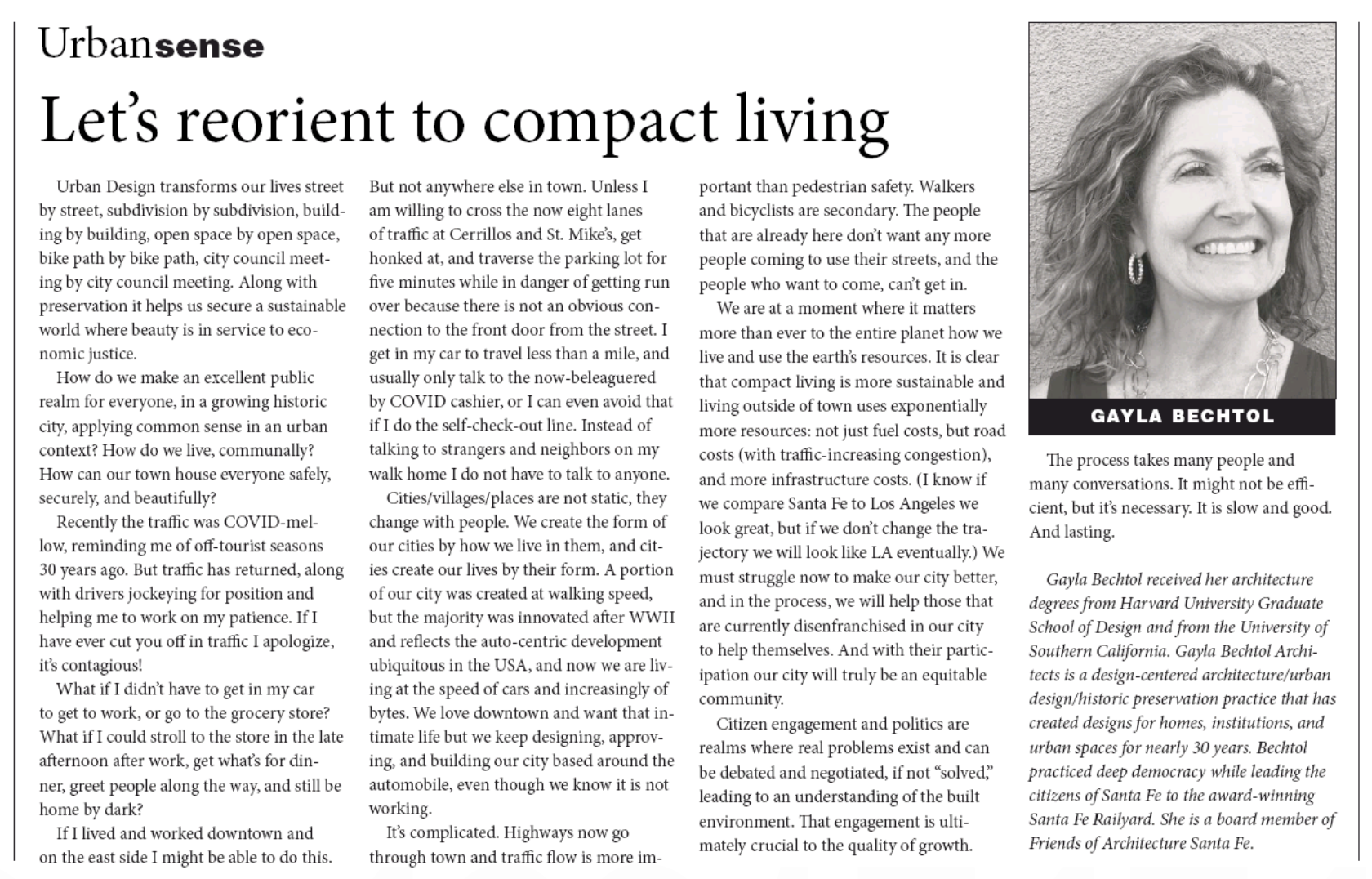In the September edition of The Santa Fe New Mexican’s Home Magazine, I discuss pros and cons of compact living in my column Urban Sense.
Read the Article:
Urban Design transforms our lives street by street, subdivision by subdivision, building by building, open space by open space, bike path by bike path, city council meeting by city council meeting. Along with preservation it helps us secure a sustainable world where beauty is in service to economic justice.
How do we make an excellent public realm for all of us, in a growing historic city, applying common sense in an urban context? How do we live, communally? How can our town house everyone safely, securely, and beautifully?
Recently the traffic was COVID-mellow, reminding me of off-tourist seasons 30 years ago. But traffic has returned, along with drivers jockeying for position and helping me to work on my patience. If I have ever cut you off in traffic I apologize, it’s contagious!
What if I didn’t have to get in my car to get to work, or go to the grocery store? What if I could stroll to the store in the late afternoon after work, get what’s for dinner, greet people along the way, and still be home by dark?
If I lived and worked downtown and on the east side I might be able to do this. But not anywhere else in town. Unless I am willing to cross the now eight lanes of traffic at Cerrillos and St. Mike’s, get honked at, and traverse the parking lot for five minutes while in danger of getting run over because there is not an obvious connection to the front door from the street. I get in my car to travel less than a mile, and usually only talk to the now-beleaguered by COVID cashier, or I can even avoid that if I do the self-check-out line. Instead of talking to strangers and neighbors on my walk home I do not have to talk to anyone.
Cities/villages/places are not static, they change with people. We create the form of our cities by how we live in them, and cities create our lives by their form. A portion of our city was created at walking speed, but the majority was innovated after WWII and reflects the auto-centric development ubiquitous in the USA, and now we are living at the speed of cars and increasingly of bytes. We love downtown and want that intimate life but we keep designing, approving, and building our city based around the automobile, even though we know it is not working.
It’s complicated. Highways now go through town and traffic flow is more important than pedestrian safety. Walkers and bicyclists are secondary. The people that are already here don’t want any more people coming to use their streets, and the people who want to come, can’t get in.
We are at a moment where it matters more than ever to the entire planet how we live and use the earth’s resources. It is clear that compact living is more sustainable and living outside of town uses exponentially more resources: not just fuel costs, but road costs (with traffic-increasing congestion), and more infrastructure costs. (I know if we compare Santa Fe to Los Angeles we look great, but if we don’t change the trajectory we will look like LA eventually.) We must struggle now to make our city better, and in the process, we will help those that are currently disenfranchised in our city to help themselves. And with their participation our city will truly be an equitable community.
Citizen engagement and politics are realms where real problems exist and can be debated and negotiated, if not “solved,” leading to an understanding of the built environment. That engagement is ultimately crucial to the quality of growth.
The process takes many people and many conversations. It might not be efficient, but it’s necessary. It is slow and good. And lasting.


